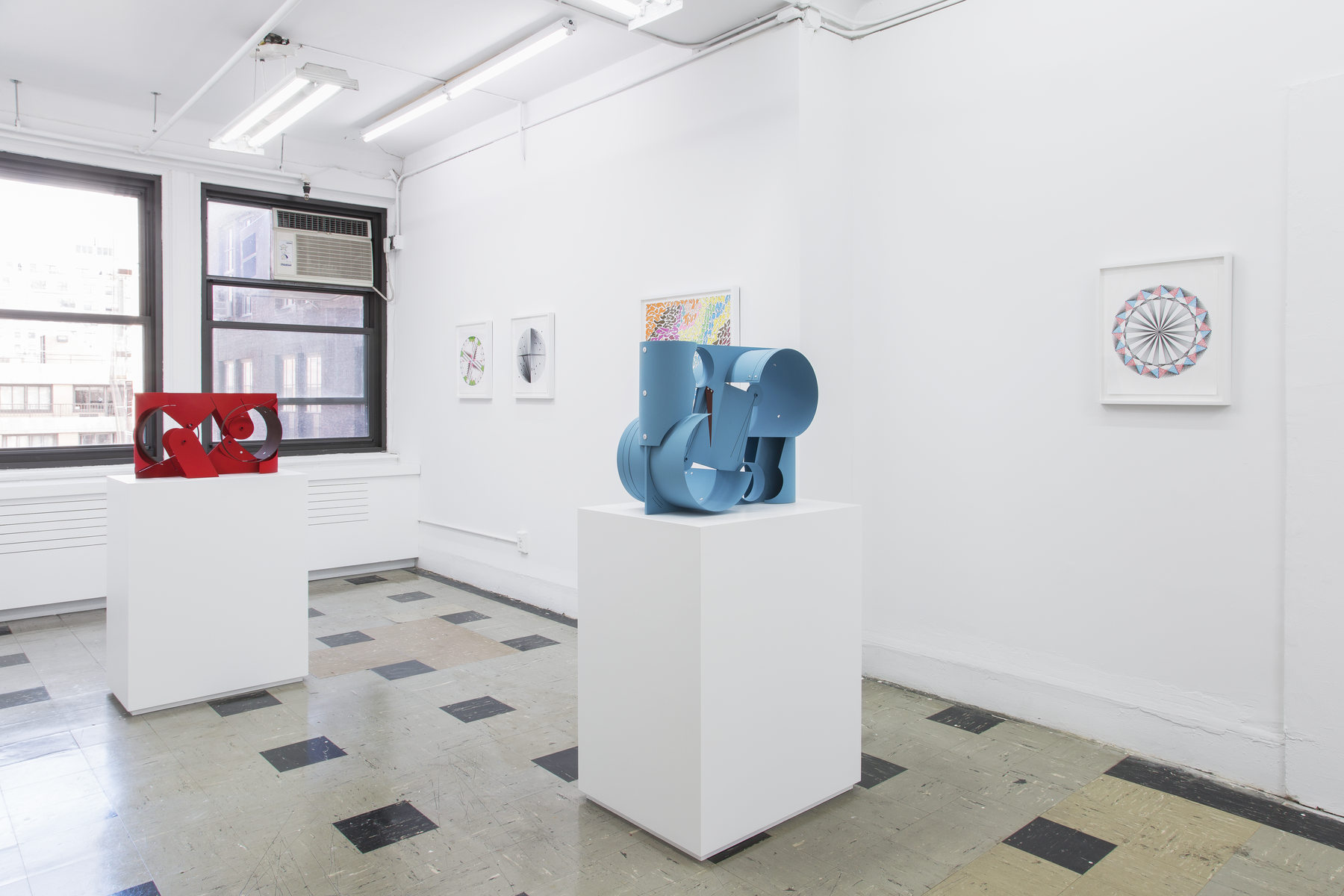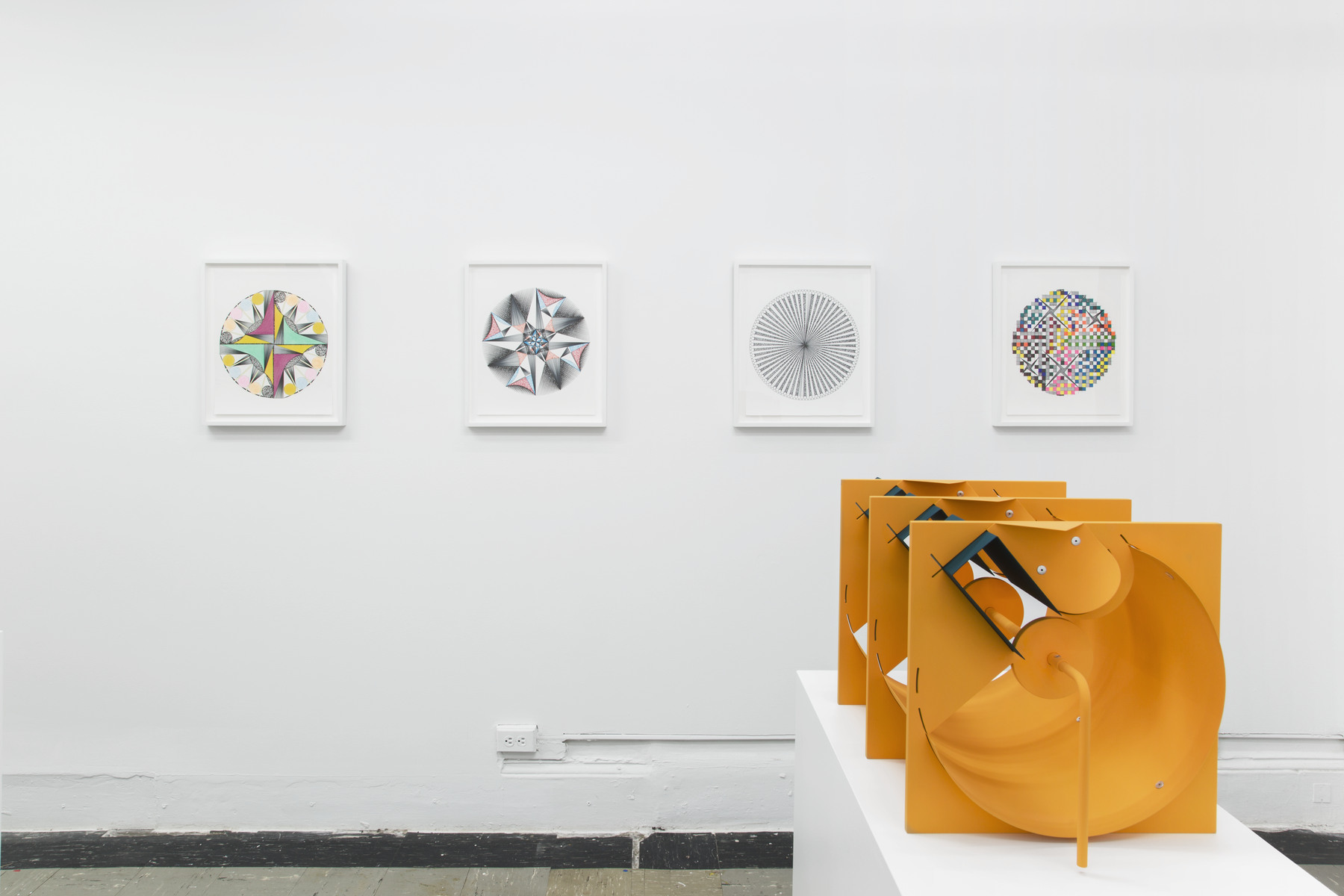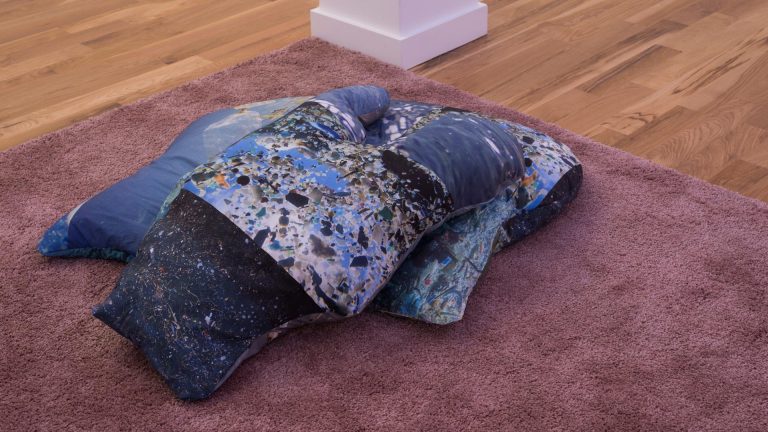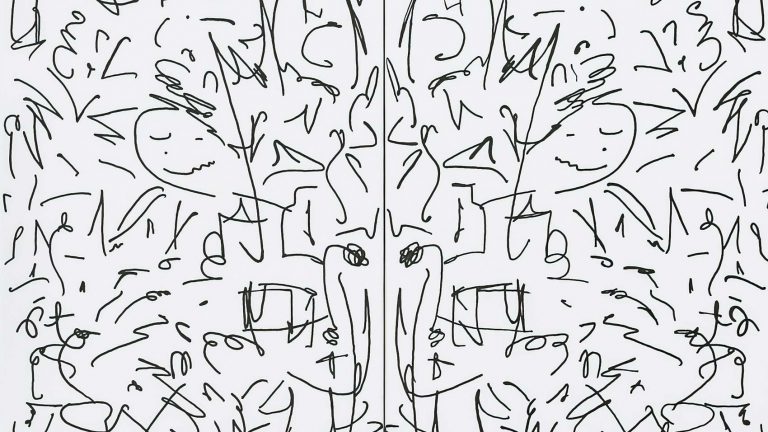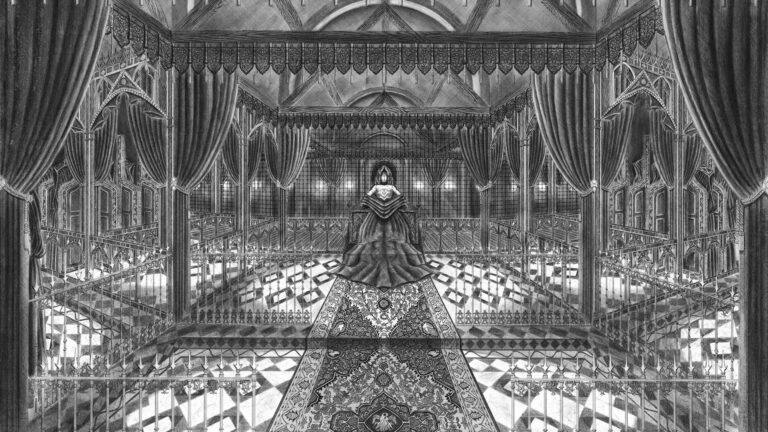Artists: Sanou Oumar and Matt Paweski
Venue: Gordon Robichaux, New York, US
Date: September 23 – November 4, 2018
Photography: all images copyright and courtesy of the artists and Gordon Robichaux, New York
Gordon Robichaux is pleased to present Sanou Oumar/Matt Paweski, a two-person exhibition that is Oumar’s debut and Paweski’s first in New York. The installation includes a large group of Oumar’s drawings and five of Paweski’s painted aluminum sculptures displayed on pedestals. The exhibition reveals the works’ points of unity and departure: the artists’ shared formal and conceptual concerns—architecture, geometry, seriality, perception, dimensionality—and offers an entry point into questions about their varied influences, contexts, and cultural experiences.
Sanou Oumar’s intricate drawings reveal his interest in the dynamic forms and structures of architecture borne out of a real yet imaginative desire for home: roots, order, and infinite calm. As a young person growing up in Burkina Faso, Oumar would contemplate the elaborate simplicity of the modern bank building in Ouagadougou: “There was nothing missing. I could see all the lines in the building: rectangles, circles, triangles, everything included, each one following its own order.” His serialized, daily drawing practice echoes this pursuit of visual order, a process that helps him reframe and come to terms with the chaos of his past and present experience: the trauma and constraints of his childhood, and the physical and emotional displacement he faces as an asylum seeker in the U.S.
Oumar’s highly inventive works elevate quotidian materials—a pen, marker, colored pencil, or paper—while employing his personal possessions as stencils: his ID card, disposable spoons, washers, compass. The deftly made drawings immediately call to mind Indian mandalas, complex circular designs that represent imaginary palaces to contemplate during meditation. They also evoke the work of Hilma af Klint and Emma Kunz who used abstract geometric language to explore complex belief systems, spirituality, and mystical restorative practices. Like Kunz, the Swiss artist and healer, whose diagrammatic drawings held within them the secret to health and well-being for her patients, Oumar draws to commune with other worlds and dimensions, the act of which is by turns metaphysical, liberating, and restorative. “The reason I am alive is because of them.”
In their tessellated shapes, colors, and patterns exist endless stories and influences: pink round flourishes represent his late mother’s soft presence; spiderweb lines evoke the suspension cables of the Brooklyn Bridge; the use of color and repetition mimic the Vlisco textiles sold in Bobo’s outdoor markets, zellige techniques of Islamic tilework, the mud architecture and modernism of his beloved bank building. All these stories are imbued with a velocity and an urgency, as if passed down from generation to generation. Each drawing optically engages the viewer in a complex exploration of pattern, color, and form, promising the same gift they give their maker: an experience of order, relief, beauty, imagination, and transformation.
In his series of “Machines,” Matt Paweski mines the intimate connections between object and viewer. He draws from varied historical and personal references, many of which are researched on his extensive travels: Italian Futurism and design, the Wiener Werkstätte in Vienna, Mexican modernism, and the distinct metalwork on gates and windows found in Havana.
In the early aughts, and in the midst of a housing boom in Arizona, Paweski worked at a fabrication shop where he became fluent in metalwork, cabinetry, furniture, fiberglass, auto-body work, and industrial paint applications. For his “Machines,” he uses these industrial techniques and materials for their “sensuousness,” he says, “their strength, their slick or dry, tactile, or sexy qualities.” He goes on: “The goal isn’t to try to solve an ergonomic problem, but to re-create the emotional response we have with that function.” Relieved of that expectation, the viewer is given over to the activity of reflexive observation, pleasure, and humor, engaged in a perceptual puzzle of positive and negative space, parts and whole, precision and sensuality.
The idiosyncratic colorful “knobs, buttons, pulls, and handles,” cohere as vibrational compositions that suggest the logic of a machine freed from the necessity and constraints of functionality. The industrial materials and fabrication techniques belie the intimacy of Paweski’s process: Each sculpture begins as a schematic drawing that’s translated into a paper maquette before it’s cut into aluminum components that are then painted, assembled, and riveted together by the artist. “There is so much handling, intuiting, and personally internalized rules and procedures that go into producing the work.”
To circumnavigate the pale -blue, oxide-green, ruby, maroon, and yellow “Machines” is to sort through a string of suggestive, figurative snapshots: the outline of two question marks in querulous battle, a Matisse cutout, a cassette tape, lawn furniture, a model toy engine turned on its side, all alive with a density and dimensionality that changes with the viewer’s movements around the room. Each work renders the process and logic of its making visible, a part-by-part assemblage of the ideas and influences that constitute their creation.
—Svetlana Kitto
Sanou Oumar (born in Bobo Dioulasso, Burkina Faso) lives and works in New York. He graduated from the University of Ouagadougou (2007) with a major in English literature, and received certification in English at the British Embassy in Dakar, Senegal (2007–2010). In 2015, Oumar came to the United States to seek asylum and pursue his dream of becoming an architect. He’s exhibited his work in group exhibitions including Art and Resistance, curated by the Center for Constitutional Rights, at Mor Mor Studio, New York; at Clifford Chance US LLP; and most recently in A Page From My Intimate Journal (Part I) — at Gordon Robichaux, where his work was celebrated in a review in The New Yorker . In December 2018, his work will be included in A Concentration of Power at Joost van den Bergh in London. A book of Oumar’s drawings with a text by Matt Paweski will be published by Pre- Echo Press and released in late October in conjunction with his exhibition at Gordon Robichaux.
Sanou Oumar and Matt Paweski, 2018, exhibition view, Gordon Robichaux, New York
Sanou Oumar and Matt Paweski, 2018, exhibition view, Gordon Robichaux, New York
Sanou Oumar and Matt Paweski, 2018, exhibition view, Gordon Robichaux, New York
Sanou Oumar and Matt Paweski, 2018, exhibition view, Gordon Robichaux, New York
Sanou Oumar and Matt Paweski, 2018, exhibition view, Gordon Robichaux, New York
Sanou Oumar and Matt Paweski, 2018, exhibition view, Gordon Robichaux, New York
Sanou Oumar and Matt Paweski, 2018, exhibition view, Gordon Robichaux, New York
Sanou Oumar and Matt Paweski, 2018, exhibition view, Gordon Robichaux, New York
Sanou Oumar and Matt Paweski, 2018, exhibition view, Gordon Robichaux, New York
Sanou Oumar and Matt Paweski, 2018, exhibition view, Gordon Robichaux, New York
Sanou Oumar and Matt Paweski, 2018, exhibition view, Gordon Robichaux, New York
Sanou Oumar and Matt Paweski, 2018, exhibition view, Gordon Robichaux, New York
Sanou Oumar and Matt Paweski, 2018, exhibition view, Gordon Robichaux, New York
Sanou Oumar and Matt Paweski, 2018, exhibition view, Gordon Robichaux, New York
Sanou Oumar and Matt Paweski, 2018, exhibition view, Gordon Robichaux, New York
Sanou Oumar and Matt Paweski, 2018, exhibition view, Gordon Robichaux, New York








